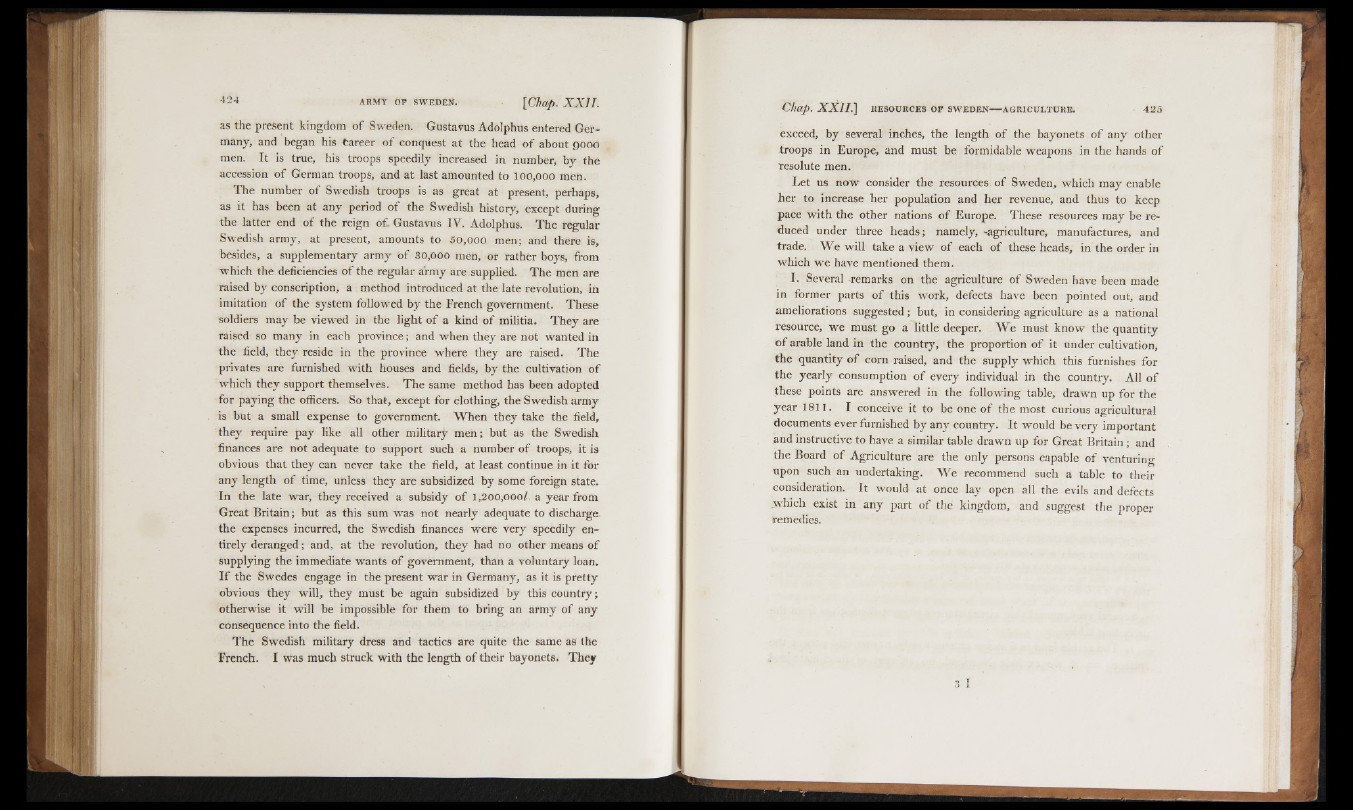
as the present kingdom of Sweden. Gustavus Adolphus entered Germany,
and began his fcareer of conquest at the head o f about 9000
men. It is true, his troops speedily increased in number, by the
accession of German troops, and at last amounted to 100,000 men.
The number of Swedish troops is as great at present, perhaps,
as it has been at any period of the Swedish history, except during
the latter end of the reign of. Gustavus IV. Adolphus. The regular
Swedish army, at present, amounts to 5o,000 men; and there is,
besides, a supplementary army o f 30,000 men, or rather boys, from
which the deficiencies o f the regular army are , supplied. The men are
raised by conscription, a method introduced at the late revolution, in
imitation o f the system followed by the French government. These
soldiers may be viewed in the light o f a kind o f militia. They are
raised so many in each province; and when they are not wanted in
the field, they reside in the province where they are raised. The
privates are furnished with houses and fields, by the cultivation of
which they support themselves. The same method has been adopted
for paying the officers. So that, except for clothing, the Swedish army
is but a small expense to government. When they take the field,
they require pay like all other military men; but as the Swedish
finances are not adequate to support such a number of troops, it is
obvious that they can never take the field, at least continue in it for
any length o f time, unless they are subsidized by some foreign state.
In the late war, they received a subsidy o f 1,200,000/, a year from
Great Britain; but as this sum was not nearly adequate to discharge
the expenses incurred, the Swedish finances were very speedily entirely
deranged; and, at the revolution, they had no other means of
supplying the immediate wants o f government, than a voluntary loan.
I f the Swedes engage in the present war in Germany, as it is pretty
obvious they will, they must be again subsidized by this country;
otherwise it will be impossible for them to bring an army of any
consequence into the field.
The Swedish military dress and tactics are quite the same as the
French. I was much struck with the length of their bayonets. They
exceed, by several inches, the length of the bayonets o f any other
troops in Europe, and must be formidable weapons in the hands of
resolute men.
Let us now consider the resources, o f Sweden, which may enable
her to increase her population and her revenue, and thus to keep
pace with the other nations o f Europe. These resources may be reduced
under three heads; namely, -agriculture, manufactures, and
trade. We will take a view o f each o f these heads, in the order in
which we have mentioned them.
I. Several -remarks on the agriculture o f Sweden have been made
in former parts o f this work, defects have been pointed out, and
ameliorations suggested; but, in considering agriculture as a national
resource, we must go a little deeper. We must know the quantity
o f arable land in the country, the proportion o f it under cultivation,
the quantity o f corn raised, and the supply which this furnishes for
the yearly consumption o f every individual in the country. All o f
these points are answered in the following table, drawn up for the
year 1811. I conceive it to be one of the most curious agricultural
documents ever furnished by any country. It would be very important
and instructive to have a similar table drawn up for Great Britain; and
the Board o f Agriculture are the only persons capable o f venturing
upon such an undertaking. We recommend such a table to their
consideration. It would at once lay open all the evils and defects
.which exist in any part of the kingdom, and suggest the proper
remedies.